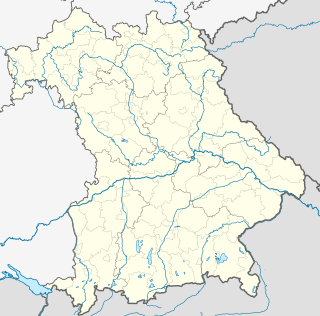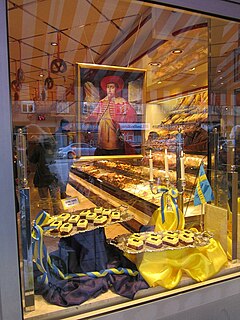 W
WGustavus Adolphus, also known in English as Gustav II Adolf or Gustav II Adolph, was the King of Sweden from 1611 to 1632, and is credited for the rise of Sweden as a great European power. During his reign, Sweden became one of the primary military forces in Europe during the Thirty Years' War, helping to determine the political and religious balance of power in Europe. He was formally and posthumously given the name Gustavus Adolphus the Great by the Riksdag of the Estates in 1634.
 W
WThe Battle of Breitenfeld or First Battle of Breitenfeld, was fought at a crossroads near Breitenfeld approximately 8 km north-west of the walled city of Leipzig on 17 September, or 7 September, 1631. It was the Protestants' first major victory of the Thirty Years War.
 W
WThe Battle of Frankfurt an der Oder on 13 April 1631 was a battle of the Thirty Years' War. It was fought between the Swedish Empire and the Holy Roman Empire for the strategically important, fortified Oder crossing Frankfurt an der Oder, Brandenburg, Germany.
 W
WThe Battle of Fürth was fought on September 3, 1632 between the Catholic forces of Holy Roman Emperor Ferdinand II and the Protestant forces of King Gustavus II of Sweden during the period of Swedish intervention in the Thirty Years War.
 W
WThe Battle of Lützen was one of the most important battles of the Thirty Years' War.
 W
WThe Battle of Rain was fought on 15 April 1632 as part of the Thirty Years' War.
 W
WThe Battle of the Alte Veste was a significant battle of the Thirty Years' War.
 W
WThe Battle of Werben was a battle of the Thirty Years' War, fought on July 22 (O.S.) or August 1, 1631 (N.S.), between the Swedish Empire and the Holy Roman Empire. The Swedes had 16,000 soldiers and were led by Gustavus Adolphus, while the Imperialists had 23,000 soldiers and were led by Field-Marshal Count Tilly. Tilly's troops attacked Gustavus' entrenchments in front of Werben (Elbe), but Swedish batteries and the cavalry under Wolf Heinrich von Baudissin forced them to retreat. The attack was renewed a few days later with a similar result, and Tilly then drew off his forces, having suffered a loss of 6,000 men.
 W
WFinnish Swedish Heritage Day is a general flag day, which is celebrated in Finland on 6 November. The day celebrates the Swedish-speaking population of Finland, their culture, and the bilinguality of Finland. The main celebrations are aired on the radio, and many smaller celebrations are held around Finland in schools. Usually, the song Modersmålets sång is sung, celebrating the mother tongue. The Finnish Swedish Heritage Day is celebrated on the same day as Gustavus Adolphus Day in Sweden, the day that king Gustavus Adolphus of Sweden was killed at the Battle of Lützen in 1632.
 W
WThe Gustav II Adolf Bible was published in 1618 during Gustav II Adolf's reign and was a revised version of Gustav Vasa Bible. One of the aims of the Gustav II Adolf Bible was to make the text more accessible to the reader and to add verse numbers.
 W
WGustavianum is the oldest standing building of Uppsala University. It was built between 1622 and 1625, and used as the main building of the university between 1778 and 1887. Since 1997 it is used as the university museum of Uppsala University.
 W
WGustavus Adolphus College is a private liberal arts college in St. Peter, Minnesota. It was founded in 1862 by Swedish Americans and is affiliated with the Evangelical Lutheran Church in America. The college retains its Swedish and Lutheran heritage.
 W
WGustavus Adolphus Day is celebrated in Sweden and some other countries on 6 November in memory of King Gustavus Adolphus of Sweden. Observing the day became popular after the 200th anniversary of the king's death in 1632. It is a general flag day in Sweden and Finland. Today it is mainly connected with the consumption of Gustavus Adolphus pastries.
 W
WGustavus Adolphus pastry is a pastry traditionally eaten every 6 November in Sweden, Gustavus Adolphus Day, the death day of King Gustavus Adolphus the Great. It is especially popular in Gothenburg, a city founded by the king.
 W
WThe Royal Gustavus Adolphus Academy in Uppsala is one of 18 Swedish royal academies and dedicated to the study of Swedish folklore. The name is often expanded to Kungl. Gustav Adolfs Akademien för svensk folkkultur.
 W
WThe wedding between Gustav II Adolf of Sweden and Maria Eleonora of Brandenburg took place at the Royal Castle on November 25, 1620.